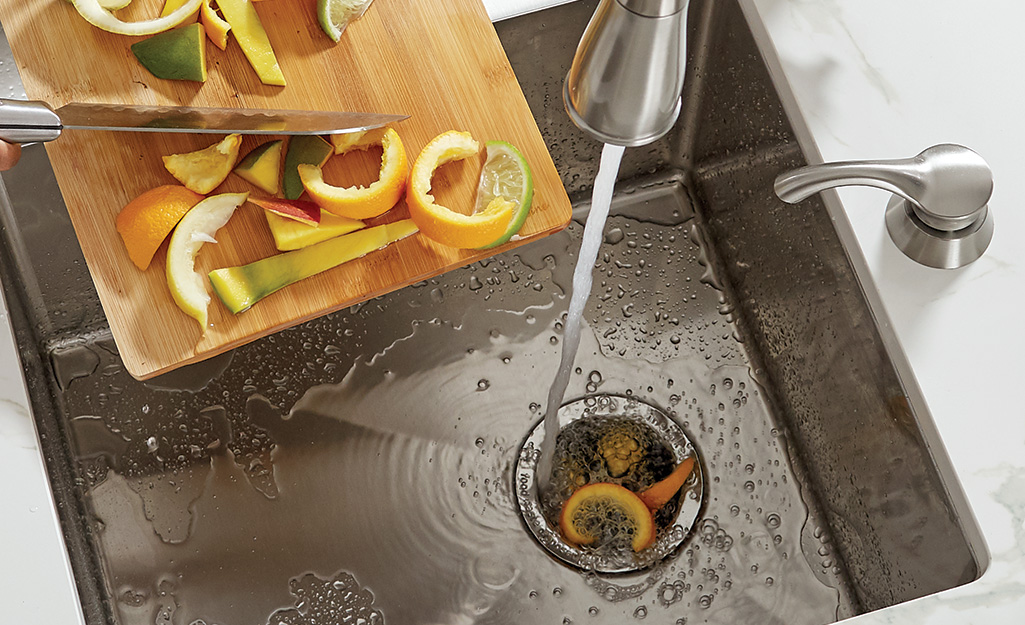Best Methods for Resolving a Leak in Your Garbage Disposal
Best Methods for Resolving a Leak in Your Garbage Disposal
Blog Article
Almost everyone is bound to have their own individual concepts in relation to Why Is .

Garbage disposals are necessary kitchen appliances that assist in dealing with food waste effectively. Nonetheless, a dripping garbage disposal can be an irritating and untidy trouble to manage. Thankfully, numerous leaks can be taken care of quickly with a couple of basic actions. In this write-up, we will certainly review just how to take care of a dripping garbage disposal efficiently.
Intro
Garbage disposals are mounted under cooking area sinks and are created to shred food waste right into smaller pieces, permitting it to travel through the plumbing system easily. While these devices are generally reliable, leakages can happen over time as a result of damage, loose links, or damage to the device.
Step-by-Step Guide to Fixing a Dripping Garbage Disposal
Switch off the Power
Before trying any fixings, make sure that the power to the garbage disposal system is switched off to prevent the danger of electrical shock.
Locate the Leakage
Identify the precise area of the leak and identify the reason
Tighten Connections
Utilize a wrench to tighten up any kind of loose connections between the disposal unit and the plumbing system.
Change Seals or Gaskets
If the leak is due to worn seals or gaskets, eliminate the old elements and change them with brand-new ones.
Patching Cracks or Holes
For cracks or holes in the disposal unit, use epoxy or a suitable patching material to secure the broken location.
Identifying the Source of the Leakage
Prior to trying to repair a leaking garbage disposal, it is necessary to identify the resource of the leakage. This can normally be done via aesthetic evaluation or by conducting simple examinations.
Visual Evaluation
Examine the garbage disposal device very carefully for any indicators of water leakage. Pay very close attention to areas around seals, gaskets, and link points.
Evaluating for Leaks
One method to test for leaks is by running water with the disposal system and checking for any type of visible indications of leak.
Typical Causes of Leakages in Trash Disposals
Worn Seals and Gaskets
Seals and gaskets play a crucial function in protecting against water from leaking out of the waste disposal unit. In time, these elements can wear away, resulting in leaks around the disposal device.
Loose Links
The connections between the waste disposal unit and the pipes system can come to be loosened over time, causing water to leakage out throughout procedure.
Splits or Openings in the Disposal Device
Physical damages to the garbage disposal, such as cracks or holes in the housing, can also result in leaks.
Devices and Materials Needed for Repairing a Leaking Garbage Disposal
Prior to starting the repair service procedure, gather the necessary devices and materials, consisting of a screwdriver, flexible wrench, plumbing professional's putty, substitute seals or gaskets, and epoxy or patching material for fixing fractures or openings.
Evaluating the Garbage Disposal After Fixing
When the repair is full, examine the garbage disposal by running water through it to make sure that the leak has actually been dealt with.
Preventive Upkeep Tips to Avoid Future Leakages
To prevent future leakages, it is necessary to execute regular upkeep on your garbage disposal. This consists of maintaining it clean, staying clear of placing non-food items or tough objects down the disposal, and regularly looking for leakages or other problems.
Conclusion
Finally, dealing with a dripping garbage disposal is a relatively simple procedure that can be completed with basic devices and materials. By adhering to the steps detailed in this article and practicing preventative maintenance, you can maintain your garbage disposal in good working condition and prevent pricey repair work in the future.
What to Do About a Leaking Garbage Disposal
A leaking garbage disposal often goes unnoticed until you confront a sopping cabinet, a foul-smelling puddle, or an audible drip-drip-drip from the unit. The fix can be frustrating, too, because the leak can stem from a number of components in the system. Fortunately, with a little sleuthing, you can zero in on the leak and—depending on the exact location—stop the icky oozing and repair the component that caused it. Worst case scenario, if it turns out that the garbage disposal must be replaced, installing a new one is a reasonable do-it-yourself task for those with basic plumbing skills. Read on to keep the cash you’d otherwise hand over to a pro.
Prepare to find the leak
Prior to testing the garbage disposal for leaks, unplug it at the wall outlet and turn off the power from the breaker box to prevent electrical shock. Then insert a watertight sink stopper into your sink drain and wipe the unit dry with a clean cloth. In any handy container, mix a few drops of food coloring into a few cups of water, and pour the dyed water onto the sink stopper to help you locate the leak.
Investigate the source
the top, where the disposal meets the sink drain the side, where the dishwasher hose or main drain pipe connects to the disposal or the bottom of the unit Inspect each of these locations while gliding a light-colored rag over the unit; the dyed water will readily show on the rag and reveal the location of the leak. If a leak isn’t immediately apparent, remove the sink stopper and pour a few more cups of dyed water down the sink drain, then check for leaks again. Leaks near the top of the unit are more likely to show themselves while the sink is plugged, while side and bottom leaks are more noticeable while the sink is unplugged.
The metal sink flange that sits directly inside the sink drain is typically sealed around the top with plumber’s putty (a clay-like sealant) and then secured from under the sink with bolts. If the plumber’s putty deteriorates, or the bolts loosen, the flange can no longer form a watertight seal between the sink drain and the disposal—which could cause a leak at the top of the unit.
To reseal the leaky flange, you must first detach the garbage disposal. Start by loosening the screws securing the main drain pipe to the disposal, then loosen the screws in the metal clamp securing the dishwasher hose to the disposal and detach the drain pipe and dishwasher hose from the disposal. Loosen the screws in the mounting ring that connects the disposal to the metal mounting assembly beneath the sink, then pull down the disposal and carefully set it on a clean, dry surface. Loosen the bolts in the mounting assembly with a wrench, then pull down the mounting assembly and set it near the disposal.

I was made aware of that editorial on Why Is through an associate on another domain. So long as you enjoyed reading our blog post please remember to pass it around. I take joy in reading our article about Garbage Disposal Leaking From Bottom.
Click Here Report this page